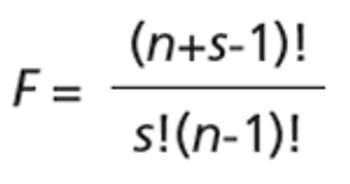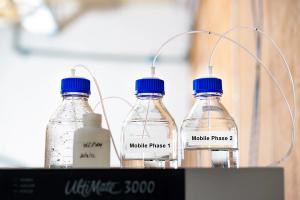
The 54th International Symposium on High Performance Liquid Phase Separations and Related Techniques (HPLC 2025) will be held from Sunday through Thursday, 15–19 June, 2025, in Bruges, Belgium.
Frédéric Lynen is with the Separation Science Group at Ghent University, in Ghent, Belgium.

The 54th International Symposium on High Performance Liquid Phase Separations and Related Techniques (HPLC 2025) will be held from Sunday through Thursday, 15–19 June, 2025, in Bruges, Belgium.

Here's a taster of what to look forward to at the 54th International Symposium on High Performance Liquid Phase Separations and Related Techniques (HPLC 2025), which will be held from Sunday through Thursday, 15–19 June, 2025, in Bruges, Belgium.

The 54th International Symposium on High Performance Liquid Phase Separations and Related Techniques (HPLC 2025) will be held from Sunday through Thursday, June 15-19, 2025, in Bruges, Belgium.

Analyzing representative standard mixtures, APIs, and synthetic impurities shows that when TRLC is combined with RPLC in 2D-LC, separation performance is improved. We explain why.

In this first TRLC instalment, our recent developments, new possibilities, and current limitations of the use of 1D TRLC are discussed, while the column performance is described with respect to the fundamentals of HPLC.

TRLC can obtain separations similar to those of reversed-phase LC while using only water as the mobile phase.

Chromatographic method development for pharmaceutical analysis can benefit from in silico steered serial coupling of column segments containing different stationary phases of varying length. Contrary to column coupling through trial and error, in stationary-phase optimized selectivity (SOS)-based chromatography the retention of all solutes is predicted for all possible column combinations allowing a rational selection of the optimal column combination. The possibilities of the strategy now surpass the initial usage in isocratic high performance liquid chromatography (HPLC) on dedicated commercial column segments, and allow applications in gradient-, green-, preparative-, and in supercritical fluid chromatography (SFC) on conventional column hardware. Current possibilities, pharmaceutical applications, a downloadable algorithm, and weaknesses of the approach are discussed to allow broader implementation of this methodology in separation science.

In this extended special feature to celebrate the 30th anniversary edition of LCGC Europe, leading figures from the separation science community explore contemporary trends in separation science and identify possible future developments. We asked key opinion leaders in the field to discuss the current state of the art in liquid chromatography instruments.

Published: February 1st 2023 | Updated:

Published: November 1st 2017 | Updated:

Published: February 1st 2018 | Updated:

Published: August 2nd 2023 | Updated:

Published: December 1st 2022 | Updated: